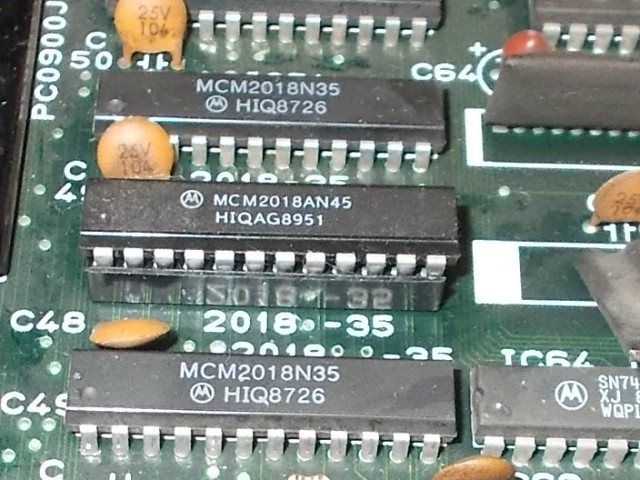Some days ago I received for repair a couple of Rainbow Islands PCBs, they were the original and Extra version.The game needs no introduction, it's the Taito masterpiece (released in 1987) that built a generation for video games.
The Extra version PCB was the first one I troubleshooted :
The board played absolutely fine but the sound was faint and corrupted :
Inspecting the board I noticed an electrolytic capacitor was installed in series between one output of the 'TL074' OP-AMP and the input of the potentiometer :
This was clearly a poor attempt to workaround the fault, the board indeed became totally mute if I removed this kludge.Using my audio probe I figured out the sound was correctly generated by the analog output of the 'YM3012' DAC:But then it got worse before reaching the main amplfier.In the middle there are two OP-AMPs (a quad 'TL074' and a dual 'uPC4556') responsible of pre-amplifying and mixing the signals :
The 'TL074' is a well known to be an unreliable part, I have encountered tons of bad ones in all these years of repairs so I went straight to remove and replace it :
This improved things a little, now I could hear clear sound but it was still faint also at highest volume sting.So the other OP-AMP was most likely faulty too :
Removed and replaced with an equivalent part:
 |
| |
The Rainbow Islands original version PCB was in good shape :
But it booted to an 'OBJECT RAM ERROR" message :
The object/sprite RAMs are four 2K x 8-bit devices (addressed by the near PGA sprite generator 'PC090' which process their data)
Probing the RAMs with a scope revealed unhealthy data signals on the one @IC50, here is below a comparison with a good signal where you can see the correct data transaction on the left snaphot :
I pulled the chip, it failed the out of circuit testing :
Fitted a socket and a good RAM chip :
Board booted into game and it was fully playable with no other issue.
End of (double) repair job.

























